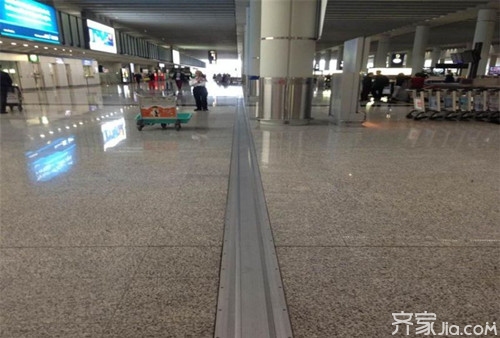It is believed that everyone knows that ground deformation joints are mainly due to differential settlement of temperature difference between day and night and deformation that may be caused by earthquakes. What about ground deformation joints? Here we will introduce in detail: Ground deformation joint treatment methods and ground deformation joint design considerations.

Ground deformation joint treatment method:
The configuration of deformation joints and expansion joints must meet the requirements for deformation of the building structure in the horizontal direction. The expansion joints on the external walls, in order to prevent wind and rain from intruding into the room, are required to fill the gaps with flexible, hydrophobic, non-extrudable materials. Commonly used materials are asphalt, hemp, impregnated asphalt, neoprene, and foam. The seams must also be covered with galvanized iron sheet, aluminum sheet or plastic sheet. The treatment of the inner wall expansion joints varies with the interior decoration and can be covered with wood, wood, plastic, metal plates, etc. Floor-to-floor expansion joints can be filled with asphalt, hemp, etc., and covered with moving covers or rubber strips to prevent dust from falling on the next floor. The expansion joints on the roof are made of galvanized iron sheet, aluminum sheet or prefabricated reinforced concrete slabs, which are used for waterproofing. The expansion joints in underground buildings, basements, etc. are often covered with glass cloth felt, rubber sheets, galvanized sheet iron, and copper sheets on the outside or bottom of the waterproof structure for waterproofing purposes, and buried or detachable waterstops are used. Belts (such as rubber, plastics, metals, etc.), and fill gaps with asphalt mortar, asphalt hemp, or asphalt impregnated wood wool boards. In a cast-in-place monolithic reinforced concrete building, since the concrete has a large shrinkage and deformation during a period of time after watering, it tends to become stable later. This characteristic can be utilized to divide the concrete along the long direction of the reinforced concrete structure. In the middle of the joints, one to two months after the construction of the first phase of the project, the joints are poured again. This type of temporary temperature shrinkage joint, which is only retained during construction, is called a post-spray seam, or shrink zone. The width of the post-seam joint is generally 50 to 100 centimeters, and the interval between the joints is approximately 20 to 25 meters. The joint is set as far as possible in combination with the joints during construction. The filler material of the joint may be concrete mixed with aluminum powder.

Ground deformation joint design considerations:
(1) The fire door located near the deformation joint should be located on the side with more floors, and it should not cross the deformation joint after the door is opened.
(2) The ground deformation joint material should be selected from the special products produced by the factory. For the construction method, refer to the finished metal deformation joint device in "Transformation joint building structure (3)" (04CJ01-3).
(3) When there is a fire protection requirement at the location of the deformation joint, a fire resistance belt shall be provided within the deformation joint.
(4) When there is a requirement for waterproofing at the location of the deformation joint, a finished metal deformation joint product with a sealing tape should be installed within the deformation joint.
(5) For floors with high requirements for noise prevention, products with rubber moldings can be used.
(6) In order to maintain a neat and beautiful appearance, in the same project, the same product should be used as far as possible for the interior wall and ceiling, and products with the same width should be used for the floor and the wall.
Editing Summary: Ground deformation joint treatment methods and ground deformation joint design considerations are introduced here, I hope to help you, more information, please pay attention to this site.
Entrance ground floor wooden floor ground tile price table ground acceptance balcony floor decoration
Steel can be easily fabricated and produced massively. Steel sections
can be produced off-site at shop floors and then assembled onsite. This
saves time and increases the efficiency of the overall construction
process.
Steel Structure Building,Prefabricated Building Metal,Steel Structure Hangar Building,Steel Structure Prefab Building
Foshan TianPuAn Building Materials Technology Co.,Ltd. , https://www.tpa-prefabhouse.com
